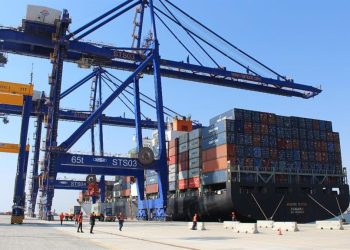
Japanese and Chinese brands led Namibia’s passenger vehicle market in April 2025, with Toyota maintaining a commanding presence and emerging Chinese models steadily gaining ground.
Simonis Storm junior economist Almandro Jansen says sales figures reflect changing buyer preferences and a growing emphasis on affordability and practicality.
“An analysis of vehicle sales by country of origin highlights a clear preference among Namibian consumers for Japanese and Chinese brands, with Japanese manufacturers maintaining a dominant lead in the passenger vehicle segment,†Jansen said.

Japanese vehicles made up 62.1% of total sales, with 772 units sold. Toyota accounted for 683 of these, equal to 54.9% of the market.
“This performance underscores strong brand loyalty and trust, particularly in Toyota, which alone contributed 683 units and captured 54.9% of the total market, Toyota’s sustained success reflects its reputation for reliability, affordability, and long-term value†Jansen said.
Chinese manufacturers followed with a 9.8% share, or 122 vehicles sold. Haval led the group with 31 units, while newer players like Jaecoo, Omoda, and Jetour are seeing early traction.
“These brands are benefitting from attractive pricing, contemporary styling, and increasing dealership support, particularly in after-sales service, positioning them to expand their footprint further,†he said.
U.S. brands, mostly driven by Ford, recorded 66 units, making up 5.3% of sales. South Korean manufacturers sold 49 vehicles (3.9%), holding steady in the entry-level and mid-range segments.
Meanwhile, German automakers posted the lowest figures at 33 units (2.65%). While known for quality and engineering, Jansen said rising prices are narrowing their appeal.
“Brands such as Volkswagen and Mercedes-Benz continue to enjoy brand prestige and engineering excellence, but rising affordability concerns are eroding their competitive edge in a market increasingly prioritising value over luxury,†he noted.

Jansen said the data points to a broader consumer shift as Namibia’s passenger vehicle landscape reflects a broader shift in consumer priorities where affordability, fuel efficiency, and practicality are beginning to outweigh traditional preferences for prestige and performance.
He noted that this creates opportunities for industry players to rethink their offerings.
“This evolution presents new opportunities for local dealerships, financiers, and service providers to adapt their offerings in line with shifting consumer expectations focusing more on cost-conscious packages, servicing support, and competitive financing models tailored to the growing mid-tier vehicle segment,†Jansen said.











